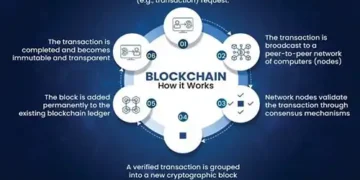Blitz Bureau
NEW DELHI: India is one of the fastest-growing digital nations in the world, with internet connectivity playing a crucial role in its progress. This momentum is reflected in the staggering 1,002.85 million internet subscribers reported during April– June 2025, highlighting the scale and impact of India’s digital revolution.
However, internet penetration remains limited in certain regions of the country, underscoring the need for satellite internet to complement existing networks.
Satellite internet refers to the internet service provided through satellites placed in Geostationary Orbits (GSO) or NonGeostationary Orbits (NGSO).
For realising the Digital India vision of a digitally inclusive nation, satellite internet is an emerging technology with the potential to provide connectivity from space to any location.
This makes it particularly valuable for remote villages, hilly terrains, border areas, and islands where terrestrial internet services are either difficult to reach or economically unviable.
Regulatory landscape
The Government has introduced a progressive regulatory framework to govern Satellite Communications (Satcom), aiming to balance innovation with security and spectrum management. Recent policy measures are shaping an environment for private participation, streamlined approvals, and efficient spectrum use, paving the way for largescale adoption of satellite internet.
In 2020, the Government introduced space sector reforms to open the doors for private sector participation in space activities. Building on this momentum, the Indian Space Policy, 2023 established a level playing field for non-Government entities (NGEs) in the space secto. The Department of Telecommunications (DoT) regulates provision of satellite-based communication by granting authorisations under the Unified Licence Regime framework.
Spectrum allocation
In May this year, the Telecom Regulatory Authority of India (TRAI) released its recommendations on the terms and conditions for the assignment of spectrum for satellite-based commercial communication services. The Indian National Space Promotion & Authorisation Centre (IN-SPACe) plays a pivotal role in enabling satellite internet in India. It is responsible for promoting, authorising and supervising various space activities of the non-Governmental entities (NGEs). The New Space India Ltd (NSIL) is a Central public sector enterprise, incorporated as the commercial arm of ISRO. It is currently operating 15 in-orbit communication satellites and providing space-based communication services to various Indian users.
Demand-driven missions
The country’s satellite communication ecosystem is undergoing a transformative shift. Traditionally dependent on geostationary satellite (GSAT) of ISRO and other satellite operators’ series, the sector is now witnessing more active private participation and the adoption of next-generation low earth orbit (LEO) and medium earth orbit (MEO) satellite systems.
NSIL, which plays a pivotal role in meeting the country’s satellite communication requirements, undertook two demand-driven satellite missions – GSATN1 for Direct-To-Home (DTH) services and GSAT-N2 for broadband connectivity. It has also proposed its third demanddriven satellite mission, GSAT-N3 slated for Q1 2026 for the Government’s Sband communication needs.
Satellite communication services and other space services are managed by NSIL through its ISAT/ GSAT satellites for extending multiple applications. In satellite communications, frequency bands serve as the essential channels through which voice, data, and broadband signals are transmitted between earth and space. Driven by the need for lower latency, higher bandwidth, and more reliable coverage, India is reimagining its satellite internet landscape from GEO satellites to LEO and MEO systems.
LEO satellites orbit close to earth, typically between 400 to 2,000-km altitude. Their proximity allows for low-latency communication, making them ideal for internet services. MEO satellites operate at altitudes ranging from 8,000 to 20,000 km. They cover larger regions and have a slightly higher latency.
































